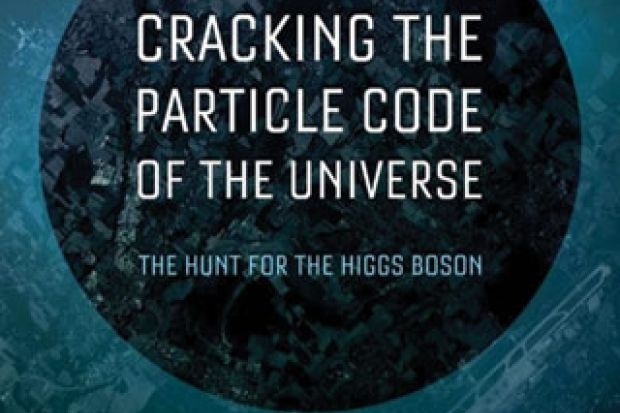Who better to give an account of the hunt for the Higgs boson than a physicist who predicted that it might not even exist? It’s certainly a unique angle, and this very personal account of particle physics and Cern’s search for the Higgs promises, according to the dust jacket, “a rare objective treatment” of the subject.
The prelude sets the tone. It describes a talk given by John Moffat at Cern, expounding his Higgs boson-less theory, just before the Large Hadron Collider is switched on. The talk provokes a hostile response from one audience member: “A verbal duel ensued and, thanks to many years of experience at such seminars, I was able to subdue him sufficiently to continue.” From the outset, it’s clear that Moffat will take no prisoners; we’d better pay attention.
The book proper whisks us on a tour of particle physics theories, their limitations, experiments and data analysis, interspersed with Moffat’s commentary on the time-ticking build-up, analysis and interpretation of the Large Hadron Collider data and eventual announcement of the Higgs boson discovery.
In some ways Moffat is an inspired choice to guide us through the subject. By his own admission, he prefers to understand a theory by setting up a rival explanation to point out the holes in it. And, as a quick internet search will show, this doesn’t just apply to the Higgs; Moffat has form, and his papers questioning assumptions about gravity, dark matter and a constant speed of light are highly cited. This confrontational, sceptical style means that we don’t just learn the standard picture, but also how we got there via the countless grubby assumptions and unsuccessful alternatives that have long since fallen by the wayside. It can be fascinating, and occasionally gives you that warming deep flash of insight. It can also be quite wearing. Moffat reiterates concerns, drawbacks and his alternative theory throughout the text, as if we keep hitting a sore spot during his train of thought and this is the only way to exorcise it. And be warned, these sections will benefit those who already know something about particle physics. Non-experts are likely to find the figures and explanations incomplete and confusing.
The experimental interludes, where we follow the Higgs search through Moffat’s eyes, may also polarise. Seeing the tenuous signal slowly emerge conference by conference from the morass of background, potential experimental bias and complexity is fascinating. The blow-by-blow account of conference coffee-break discussion is fun. In his inimitable style, Moffat wastes no opportunity to attack potentially deadly mishaps in taking or interpreting data before concluding, shamelessly, that the experimentalists seem to be doing a careful job after all despite the pressure of funding and politics. If you are an expert, you may find Moffat’s sometimes wilful use of statistics to support his argument, and occasional mistake in describing experiments, annoying. If you are a non-expert, you may love the high drama of is-it-isn’t-it-a-Higgs that Moffat provides.
There are many books on the market that describe the Higgs boson discovery. This book’s uniqueness is its author’s uncompromising drive to question both theory and experiment. It might frustrate you. You might love it. I recommend you try reading some of it first before buying, to make sure the latter applies.
Cracking the Particle Code of the Universe: The Hunt for the Higgs Boson
By John W. Moffat
Oxford University Press, 224pp, £19.99
ISBN 9780199915521
Published 6 March 2014
Register to continue
Why register?
- Registration is free and only takes a moment
- Once registered, you can read 3 articles a month
- Sign up for our newsletter
Subscribe
Or subscribe for unlimited access to:
- Unlimited access to news, views, insights & reviews
- Digital editions
- Digital access to THE’s university and college rankings analysis
Already registered or a current subscriber?





